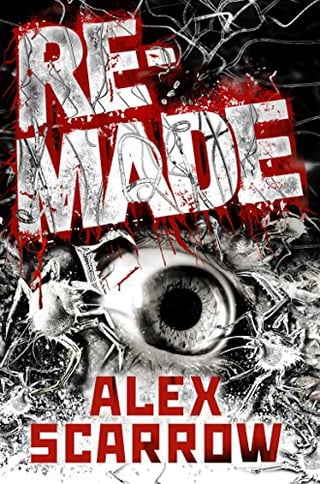This is Re-Made (2016) (published as Plague Land (2017) in the U.S.) by Alex Scarrow.


The protagonist is Leon, who lives in London with his mother and sister, Grace. The first few chapters flip back and forth between their lives and views around the world as the virus spreads, killing all the other people we meet. The virus reaches London just as Leon and his family try to leave for Norwich. It arrives (and travels) as tiny flakes in the air:
It fluttered down to earth, an anonymous dot of life—not even life yet. Something dormant, inert. A light breeze, the upward warming gust of the city below, kept it dancing and airborne, a small flake just visible to the naked eye.
We start getting chapters from the virus' point of view now, with its start in a droplet of water in a potted plant and infecting a pigeon.
They get a last call from Leon and Grace's father, Tom, as New York is consumed, and shortly after the train they are on is stopped as the virus gets on board. It seeks out people:
The dark jelly that used to be Ben Mareham seemed to have spread in a peculiar way: thin filament lines snaked and weaved in all directions across the rubber-mat floor.
[...]
He traced the lines, picking up on one tributary that seemed thicker and more established than the others around it, thin lines that fanned out and came to feathery dead ends. He followed this line, increasing in thickness until it started to look like a length of electrical cord, then thicker, like tarred rope. It squeezed through the narrow gap beneath the door and disappeared into the next car.
As they escape the train, a gust of wind blows a cloud of flakes toward them. One of the people they are with gets a flake blown onto his hand, which he immediately wipes off, trying to pretend it was nothing. Regardless, he is dead in a few hours anyway.
Further on there is a description of how the virus copies and trades the DNA "information" it gets as it consumes living things:
...the cells merged into a single big pool rich in stores of nutrition, a gathering place where cells swirled around each other and exchanged the tiny packets of DNA data they each carried like market square gossip, like mercenaries comparing their stolen goods.
They exchanged, compared, and every now and then, when pieces of DNA accidentally fit together, like jigsaw puzzle pieces stirred around in a box, they...reconstructed.
And the virus starts trying out the new things it learns.
Seven hours ago—decades by the timescale of entities as microscopic as these—an almost believable facsimile of a pond snail had been remade. Simple in structure, simple in locomotion, simple in thought. The successful assembly of an almost-complete species genome from the fragments stolen as the virus had rampaged and looted its way across the pond microcosmic centuries ago.
Baby steps, microcosm milestones.
Leon and Grace (having lost their mother) find refuge with a few people in a shelter the virus has not yet managed to breach. The virus fakes a pony, which gets close enough to kill a couple of the survivors, but it is finally a near-perfect copy of people that gets it access to the rest:
This particular intelligence cluster had carefully and patiently read this species' construction manual, its DNA, and attempted many times to make viable reconstructions until it had finally, despite the difficulty of mimicking the dead-tissue structures, the things made from keratin protein, had finally gotten it right.
"Megan" and "Stevie" had been convincing enough to fool these creatures.
The book basically ends right there, with the virus people killing the remaining humans
who are responsible for killing Grace, who had somehow been taken over while still seeming to be Grace.
The very last line of the book is the virus deciding that Grace should be "re-made."


